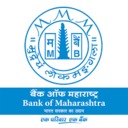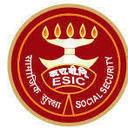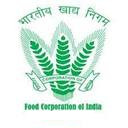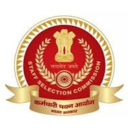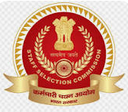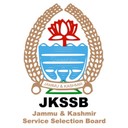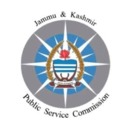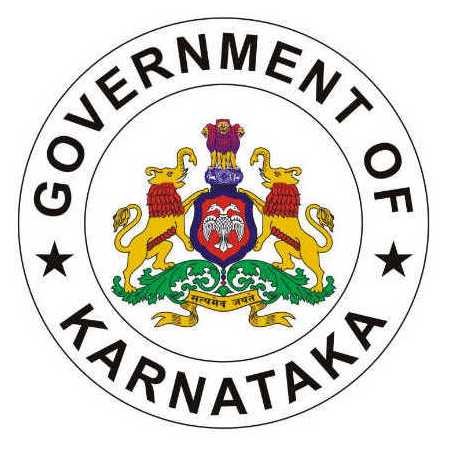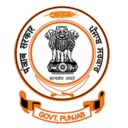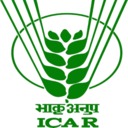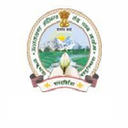The NABARD Grade A exam has two stages: Prelims and Mains. The Prelims includes six sections: Reasoning Ability, Quantitative Aptitude, English Language, General Awareness, Decision Making, and Computer Knowledge, with a total of 200 questions carrying 200 marks.
The Mains exam has both objective and descriptive papers. It covers English, Economic & Social Issues (ESI), and Agriculture & Rural Development (ARD). Candidates applying for Legal or other Specialist Officer posts will have English and a paper specific to their field. In Mains, each section is worth 100 marks, with ESI and ARD divided into 50 marks each for objective and descriptive parts. In this blog, we have provided subject-wise syllabus details.
What is the NABARD Grade A syllabus?
The NABARD Grade A 2025 exam has three phases. Phase 1 is a preliminary exam, Phase 2 includes both objective and descriptive papers, and Phase 3 has a psychometric test and an interview. The syllabus covers different subjects for each phase. In Phase 1, candidates are tested on Reasoning, Quantitative Aptitude, English, General Awareness, Decision Making, and Computer Knowledge. For Agriculture & Rural Development (ARD) streams, Phase 2 focuses on Agriculture, Soil & Water Conservation, Water Resource Management, Agri & Farm Engineering, Horticulture & Plantation, Animal Husbandry, Fisheries, Forestry, Agricultural Extension, Ecology & Climate Change, Rural Development, and the current situation of agriculture. The Economic & Social Issues (ESI) section is part of both phases and includes topics like Indian Economy, Inflation, Employment & Poverty, Population, Industry, Financial Institutions, Globalization, Social Structure, Education, Social Justice, and support for underprivileged groups.
What topics are included in the NABARD Grade A phase 1 syllabus?
The prelims exam is the 1st stage of the selection process in NABARD Grade A 2025 Exam. Hence, it is important to know the syllabus for a better preparation. Check out the NABARD Grade A Syllabus for the qualifying sections of Prelims.
| Section | Topics Covered |
|---|
| Reasoning Ability | Puzzles & Seating Arrangement, Syllogism, Data Sufficiency, Statement-Based Questions (Verbal Reasoning), Inequality, Miscellaneous Questions, Input–Output, Blood Relations, Coding–Decoding |
| Quantitative Aptitude | Data Interpretation, Quadratic Equations, Number Series, Simplification/Approximation, Data Sufficiency, Arithmetic Questions, Quantity Comparisons, Mathematical Inequalities |
| English Language | Reading Comprehension, Cloze Test, Sentence Improvement, Spotting Errors, Fill in the Blanks, Sentence Rearrangement, Para Jumbles, New Pattern Questions |
| General Awareness | Current Affairs (National & International), Banking, Economy, and Insurance, Recent Appointments, Sports, Awards & Honours, Government Schemes, Science & Technology Developments |
| Decision Making | Interpreting Information, Recognizing Assumptions, Situation-Based Questions, Case Studies |
| Computer Knowledge | Input–Output Devices, Networking, DBMS, MS Office, Internet, History & Generations of Computers, Keyboard Shortcuts |
Attempt NABARD Grade A Mock Test
What topics are included in the NABARD Grade A phase 1 and 2 ARD syllabus?
The candidates must prepare for both Phase 1 & 2 simultaneously for NABARD Grade A ARD as the topics are same but the difficulty level changes.
| Main Topics | Subtopics / Key Areas |
|---|
| Agriculture | • Definition, meaning, and branches of agriculture • Agronomy – definition, meaning, and scope • Classification of field crops • Factors affecting crop production • Agro-climatic zones • Types of cropping systems • Dry land problems • Seed production & processing • Seed village • Meteorology – weather parameters, crop-weather advisory • Precision farming • System of crop intensification • Organic farming |
| Soil and Water Conservation | • Major soil types • Soil fertility • Fertilizers • Soil erosion and conservation • Watershed management |
| Water Resource Management | • Irrigation management • Types and sources of irrigation • Crop-water requirement • Command area development • Water conservation techniques • Micro irrigation • Irrigation pumps • Major, medium & minor irrigation projects |
| Agri & Farm Engineering | • Power and machinery used in farms • Power sources – animal, human, electrical, mechanical, wind, biomass, solar, biofuels • Water harvesting structures • Farm ponds • Agro processing • Modified & controlled storage • Storage of perishable foods • Bins, godowns & grain silos |
| Horticulture & Plantation | • Meaning, definition & branches • Production technology & agronomic practices of horticultural and plantation crops • Value & supply chain management • Post-harvest management |
| Animal Husbandry | • Role of farm animals in Indian economy • Animal husbandry practices in India • Common livestock terminologies • Utility classification of cattle breeds • Common fodders & feeds – types and utility • Poultry industry and production in India • Mixed farming – concept & socio-economic importance • Relationship between livestock, poultry, and agriculture |
| Fisheries | • Fisheries resources and management – marine, freshwater & brackish water • Aquaculture – inland & marine • Biotechnology in fisheries • Post-harvest technology • Importance of fisheries in India • Common fish production terms |
| Forestry | • Basic concepts of forest & forestry • Management, mensuration & forest economics • Principles of silviculture • Agroforestry, social forestry & joint forest management • Forest legislation & policies in India • State of Forest Report 2015 • Ministry of Forest, Environment & Climate Change – functions & updates |
| Agriculture Extension | • Role and importance of agricultural extension • Evaluation methods of extension programmes • Role of Krishi Vigyan Kendras (KVKs) in technology dissemination |
| Ecology & Climate Change | • Ecology and relevance to human life • Sustainable resource management & conservation • Climate change – causes & greenhouse gases (GHGs) • Adaptation vs mitigation • Impact on agriculture and rural livelihoods • Carbon credits, IPCC, UNFCCC, CoP meetings • Funding mechanisms for climate projects • Indian initiatives – SAPCC, NAPCC, INDC |
| Present Scenario of Agriculture & Allied Activities | • Recent trends in agriculture • Major challenges and solutions • Measures to enhance viability • Factors of production in agriculture • Agricultural finance & marketing • Globalization & its impact on Indian agriculture • Food security concerns • Farm management – concept & types |
| Rural Development | • Concept of rural areas and rural economy • Economic, social & demographic importance • Causes of rural backwardness • Rural population and workforce trends • Occupational structure – farmers, labourers, artisans, traders, forest dwellers, etc. • Issues of rural labour and handlooms • Panchayati Raj Institutions – functions & working • Key rural schemes – MGNREGA, NRLM (Aajeevika), Rural Drinking Water, Swachh Bharat, Rural Housing, PURA, and other programmes |
What is the ESI syllabus for the NABARD Grade A phase 1 and phase 2 exam?
The Economic & Social Issues (ESI) section is included in both Phase I (Prelims) and Phase II (Mains) for all streams. It is a merit-based section in Prelims and forms part of Paper II in Mains, which is divided equally between objective and descriptive questions. In the Mains exam, the level of questions is more difficult.
| Main Topics | Subtopics / Key Areas |
|---|
| Indian Economy and Its Nature | • Institutional and structural features of the Indian economy • Economic underdevelopment • Opening up of the Indian economy • Globalization and its effects • Economic reforms in India • Privatization and liberalization |
| Inflation | • Types and trends of inflation • Causes and control measures • Impact of inflation on individual income and the national economy |
| Employment Generation & Poverty Alleviation in India | • Employment trends in urban and rural areas • Poverty measurement methods • Major poverty alleviation programmes of the Government of India |
| Population Trends | • Population growth and its impact on economic development • Population policy in India • Demographic transition and related challenges |
| Agriculture | • Characteristics and current status of Indian agriculture • Technical and institutional changes • Agricultural performance • Food security issues in India • Rural credit – institutional and non-institutional agencies |
| Industry | • Industrial and labour policies • Industrial performance and growth • Regional imbalances in industrial development • Role of public sector enterprises |
| Financial Institutions and Rural Banking in India | • Structure and role of financial institutions • Rural banking systems • Financial sector and banking reforms in India |
| Economic Globalization | • Role of international funding institutions • IMF, World Bank, and WTO • Regional economic cooperation and integration |
| Social Structure in India | • Multiculturalism and diversity • Demographic trends and urbanization • Migration and its social impact • Gender issues • Joint family system • Social infrastructure – education, health, and environment |
| Education | • Status and structure of the education system in India • Problems of illiteracy and socio-economic implications • Educational relevance and wastage • Educational policies and reforms in India |
| Social Justice | • Issues of Scheduled Castes (SCs) and Scheduled Tribes (STs) • Socio-economic programmes for SCs, STs, and Other Backward Classes (OBCs) • Measures and policies for promoting social equity |
| Positive Discrimination / Upliftment of Underprivileged Classes | • Steps taken to support underprivileged and weaker sections • Social movements and their significance • Indian political system and democratic values • Human development and social welfare • Current economic and social issues in India |
Attempt NABARD Grade A Previous Year Papers
Download the NABARD Grade A syllabus PDF
Candidates can find the stream-wise NABARD Grade A Phase 2 syllabus PDFs in the section below. A combined syllabus PDF for both Phase 1 and Phase 2 is also provided, covering all subjects in a single file. This resource helps aspirants from General, Agriculture, and other streams stay organized and plan their preparation effectively. Aspirants can click the link below to download the NABARD Grade A syllabus PDF for free and access the complete syllabus in one place.
Download NABARD Grade A Syllabus PDF
NABARD Grade A subject wise syllabus PDF download link
Candidates can download the subject-wise syllabus PDF through the direct link provided below.
NABARD Grade A exam pattern for RDBS / Legal
The NABARD Grade A Exam Pattern 2025 for the Prelims exam is the same for all streams, whereas Phase 2 varies as per the post applied for.
What is the NABARD Assistant Manager prelims exam pattern?
The Preliminary Exam is an online objective test comprising of 200 marks that has to be completed in 2 hours. The Prelims Exam Pattern for NABARD Grade A has been revised by the authority, which has been discussed below:
| S. no | Sections | Total Marks/ No. of Questions | Time Taken |
|---|
| 1. | Test of Reasoning | 20 | A composite time of 2 hours (120 minutes) |
| 2. | English Language | 30 |
| 3. | Computer Knowledge | 20 |
| 4. | Quantitative Aptitude | 20 |
| 5. | Decision Making | 10 |
| 6. | General Awareness | 20 |
| 7. | Eco & Soc. Issues (with focus on Rural India) | 40 |
| 8. | Agriculture & Rural Development with Emphasis on Rural India | 40 |
| Total | 200 |
What is the NABARD Assistant Manager mains exam pattern?
The candidates who clear the Preliminary exam of the NABARD Grade A Recruitment 2025 will be eligible to appear for the NABARD 2025 Mains Examination. The Mains examination comprises both an online objective test and a descriptive test paper.
Mains Examination for the Post of Generalist
The details of the Mains exam pattern for the post of Generalist are as follows:
| Paper | Type of Paper | No. of Questions | Marks | Duration | Remarks |
|---|
| Paper I: General English | Online Descriptive | 3 | 100 | 90 Minutes | Answers to be typed using keyboard |
Paper II: Economic & Social Issues and Agriculture & Rural Development | Objective | 30** | 50 | 30 Minutes | Some questions carry 2 marks each and some carry 1 mark each |
| Descriptive Type | 6 (Attempt any 4)
• 2 × 15 marks each (higher difficulty)
• 2 × 10 marks each | 50 | 90 Minutes | Answers to be typed using keyboard either in English or Hindi (Remington/Inscript keyboards) |
Notes: ( ** ) Some objective questions carry 2 marks each and others 1 mark each.
Mains Examination for the Post of Specialist
The details of the Mains exam pattern for the post of Specialist are as follows:
| Paper | Type of Paper | No. of Questions | Marks | Duration | Remarks |
|---|
| Paper I: General English | Online Descriptive | 3 | 100 | 90 Minutes | Answers to be typed using keyboard |
Paper II: Stream-Specific Paper | Objective ($) | 30** | 50 | 30 Minutes | Paragraph/Numerical/Application-based interpretive questions
Some questions carry 2 marks each and some carry 1 mark each |
| Descriptive Type | 6 (Attempt any 4)
• 2 × 15 marks each (higher difficulty)
• 2 × 10 marks each | 50 | 90 Minutes | Answers to be typed using keyboard either in English or Hindi (Remington/Inscript keyboards) |
Notes:
- ( $ ) Paragraph-based, numerical, or application-based interpretive questions.
- ( ** ) Some objective questions carry 2 marks each and others 1 mark each.
Mains Examination for the Post of Legal
The details of the Mains exam pattern for the post of Legal are as follows:
| Paper | Type of Paper | No. of Questions | Marks | Duration | Remarks |
|---|
| Paper I: General English | Online Descriptive | 3 | 100 | 90 Minutes | Answers to be typed using keyboard |
Paper II: Stream-Specific Paper | Objective | 30** | 50 | 30 Minutes | Some questions carry 2 marks each and some carry 1 mark each |
| Descriptive Type | 6 (Attempt any 4)
• 2 × 15 marks each (higher difficulty)
• 2 × 10 marks each | 50 | 90 Minutes | Answers to be typed using keyboard in Hindi (Remington/Inscript keyboards) |
Notes: ( ** ) Some objective questions carry 2 marks each and others 1 mark each.
Explore NABARD Grade A Courses
NABARD Grade A Exam Pattern for Protocol & Security Service (P&SS)
The selection process for the Assistant Manager (Protocol & Security Service) post consists of three stages Online Examination, Psychometric Test, and Interview. The online exam is objective in nature and is designed to assess candidates' reasoning ability, general awareness, professional knowledge, and English proficiency.
| Name of the Test | No. of Questions | Maximum Marks | Version | Duration |
|---|
| Test of Reasoning | 50 | 50 | Bilingual (Hindi/English) | Composite time of 120 minutes for all sections |
| English Language | 50 | 25 | English only |
| General Awareness (with special reference to Banking Industry) | 50 | 50 | Bilingual (Hindi/English) |
| Professional Knowledge | 50 | 75 | Bilingual (Hindi/English) |
| Total | 200 | 200 | | 120 Minutes |
Key Highlights:
- The exam is conducted online and consists of objective-type multiple-choice questions (MCQs).
- All sections, except English Language, are available in both English and Hindi.
- There is no sectional time limit; candidates can attempt questions in any order within the overall 120 minutes.
- The Professional Knowledge section carries the highest weightage, emphasizing the candidate's defence and security background.
- Negative marking of ¼ mark is applicable for each wrong answer.
How to prepare for NABARD Grade A & B exams 2025?
A focused preparation plan combined with daily practice is crucial for success in any exam. Here's a step-by-step approach to help you prepare effectively for NABARD Grade A & B exams:
| Step | Description |
|---|
| Start with Mock Tests | Attempt a few mock tests initially to identify your strengths and weak areas in the syllabus. |
| Analyze & Improve | Use the results to focus more on topics where you need improvement and strengthen those areas. |
| Regular Practice | Consistently solve Grade A & B mock tests to build speed, accuracy, and exam familiarity. |
| Understand Subject Importance | Regular practice helps you understand which subjects carry more weight and how to allocate time wisely. |
| Refer to RBI Grade B Strategy | Review the RBI Grade B preparation strategy I created, as it offers useful insights applicable to NABARD preparation as well. |
| Use Reliable Resources | Rely on trusted study materials and cover the entire syllabus thoroughly for best results. |
| Access Study Materials | Utilize free, high-quality RBI Grade B notes and video lectures I provide, which cover all topics with detailed explanations. |
Key Takeaways
Here's a Key Takeaways Table for the NABARD Grade A Syllabus:
| Key Point | Details |
|---|
| Phases of Exam | Two main phases – Prelims (Phase I) and Mains (Phase II) |
| Prelims Sections | Reasoning, English, Quantitative Aptitude, Computer, Decision Making, GA, ESI, ARD |
| Merit Sections in Prelims | General Awareness (GA) Economic & Social Issues (ESI) Agriculture & Rural Development (ARD) |
| Qualifying Sections in Prelims | Reasoning, English Language, Quantitative Aptitude, Computer Knowledge, Decision Making |
| Mains Paper I | Descriptive English – Essay, Precis, Comprehension, Business Communication |
| Mains Paper II (Generalists) | ESI and ARD – 50 marks Objective + 50 marks Descriptive |
| Mains Paper II (Specialists) | Discipline-specific – 50 marks Objective + 50 marks Descriptive |
| Common Subjects in Both Phases | ESI and ARD are asked in both Prelims and Mains (more advanced in Mains) |
| Descriptive Focus Areas | ESI, ARD (conceptual clarity, application-based writing, data interpretation) |
| Preparation Tip | Download and refer to official NABARD syllabus PDF regularly for focused study |











